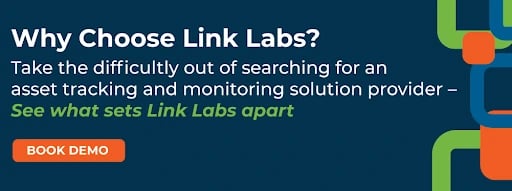As workers in various industries go about their day, they use many different tools and equipment to help complete daily processes. As tools and equipment help workers complete daily tasks quicker, it’s important to have accountability for them at any given moment.
Industries such as manufacturing, healthcare, and logistics have implemented a Real-Time Locating System (RTLS) to help them with equipment and tool tracking. Examples can range from crash kits in a hospital to tractor-trailers on a construction site. Why should your company consider using an asset tracking system?
Why Use an RTLS?
Using an RTLS can give your company real-time visibility over the location and condition of your tools and equipment. Since many machines require calibrating and check-ups at least once a year, keeping track of them using an RTLS would save you time and money. An asset tracking system like Link Labs’ AirFinder has helped many companies handle their tools by providing real-time visibility. Here are some use cases to consider when using an RTLS to track your tools.
- Tool and equipment usage monitoring: The most basic use case for asset tracking systems is location and condition information. The asset tags attached to the equipment can help users visualize where an item is located and how long it has been in use.
- Process optimization: Knowing the location of tools on a worksite can save valuable time. Instead of spending time and manpower locating a particular asset, an RTLS solution can send that information to the cloud when prompted.
- Theft monitoring and prevention: Because some RTLS solutions come with geofencing capabilities, the asset tags attached to equipment can send alerts when a piece of equipment leaves a designated area via an easy-to-use interface.
RTLS solutions provide a wide range of capabilities to ensure seamless equipment tracking. Now, let's take a look at what exactly you can track using an RTLS.
Join the AirFinder Difference!
- Innovation. Organizations can be freed up to innovate and bring more impactful products and services to market.
- Profitability. Increased profitability provides new opportunities to innovate and improve valuation.
- Digital Transformation. Discover competitive advantages, new revenue opportunities, improved customer relationships and increased efficiency.
What Can I Track Using an RTLS?
Whether on a worksite or a factory, the sheer number of moving parts is easier to handle by implementing an asset tracking system. So what exactly can your company track with an RTLS?
Manufacturing
In the manufacturing industry, anything from tool racks to pallets is trackable. Some tools need calibration regularly. An asset tracking system can send alerts as reminders to managers.
Logistics
Asset tracking tags can be attached to moving loads such as pallets or trailers. Knowing exactly where your materials are located can add value to the service you provide to your customers.
The healthcare industry uses x-ray machines, heart monitors, and other devices/tools to provide healthcare daily. Knowing the location of capital assets can increase efficiency in caregiving by reducing time spent looking for tools.
Transportation
Adding increased visibility to the tools used in a large area such as an airport can assist employees in giving the best service. Tracking shipments by air or railway is another benefit of tool tracking.
Wrapping it Up
As your company continues to use valuable tools and equipment, why not look into Link Labs’ AirFinder solution to keep track of them? For more information, book a demo today!





